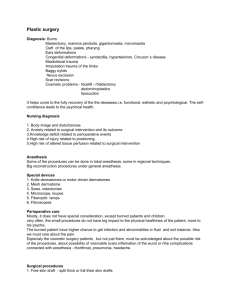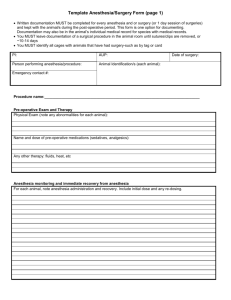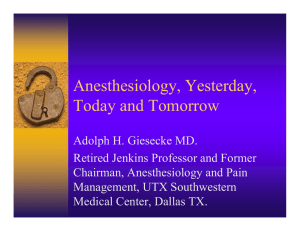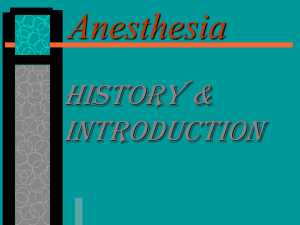File - The Deep Sleep: Anesthesia`s Revolution in Medicine
advertisement
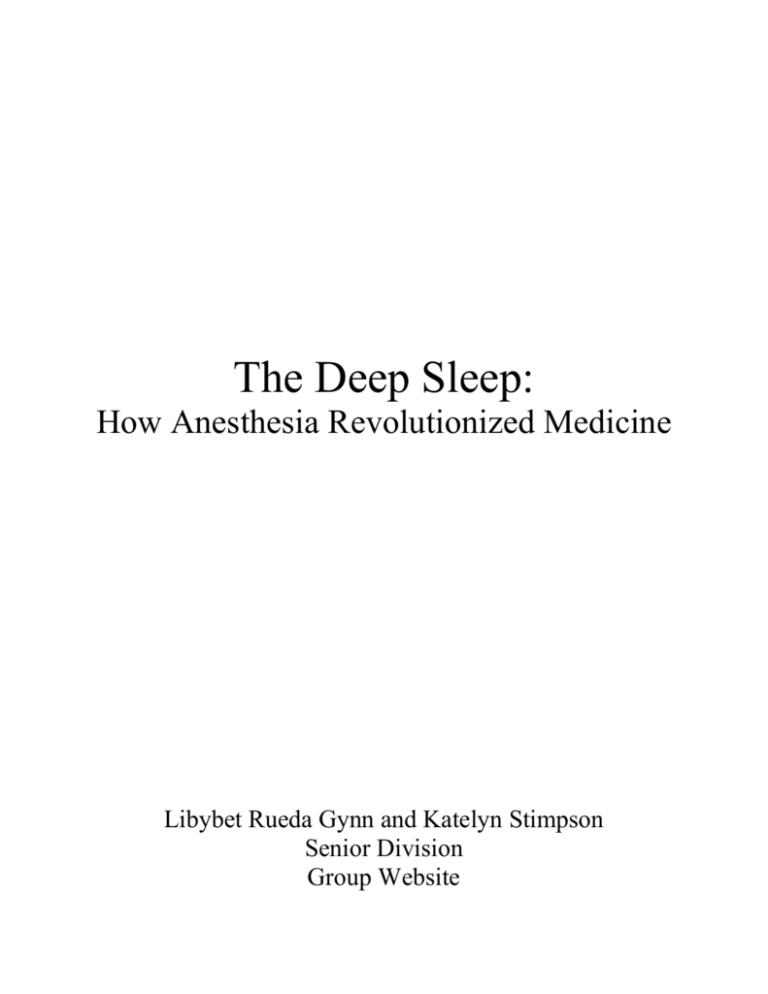
The Deep Sleep: How Anesthesia Revolutionized Medicine Libybet Rueda Gynn and Katelyn Stimpson Senior Division Group Website It was upon learning of a book that Libybet's grandmother wrote detailing the history of mastectomy – a surgery performed as a treatment of breast cancer – through nearly two thousand years B.C. the we were first struck with the shocking realization: up until not even 200 years ago, people were forced to endure the gruesome pain of surgery without the benefit of anesthesia to relieve their suffering. Nearly impossible, it became, for us to imagine what our lives would be like had anesthesia not been invented, and more importantly, popularized to become integrated into the performance of nearly all medical procedures. Knowing that the life of a patient could be cut short due to the lack of what is today such a common technology, we found ourselves wanting to dig more deeply into the history of the drug and its impact on not just the medical world, but also on the lives of ordinary patients. It was from such intriguing yet horrifying investigations that evolved the topic for our National History Day project – that is, the widespread medical revolution brought about by the first public use of anesthesia during surgery, on October 16, 1846. Our interest was further provoked by our living so close to Massachusetts General Hospital, home to the Ether Dome – the amphitheater in which ether was first publicly used as an anesthetic – a nearby source of great information for our project. Once we had settled on our topic, our first step was to gather some basic information about the primitive beginnings of anesthesia by different methods, and their courses of development throughout the world. In browsing through a multitude of websites, we collected useful facts regarding the general voyage that resulted in modern anesthesiology, and designed a timeline of certain landmark events that dotted this path. Once familiarized with the story of anesthesia on this broad level, we narrowed our scope to events solely within the United States, focusing on the anticipation, controversy, and reaction surrounding the spectacle at the Ether Dome. Following our research through books, pamphlets, and online databases, we took a trip to the site; there, we spoke with a guide, took photos of the actual tools used in surgery, and observed paintings from the time of the procedure. After summing up our data with several final searches and consolidating our materials, we began to create the project display that we thought would most effectively convey our message to a diverse span of viewers: a website. The incorporation of both audio and visual components into a vivid portrayal of anesthesia's story, we reasoned, would capture the interest of all audiences in learning about a seemingly dull topic. Having already conducted all of our research, we were left to transform the information into a clear yet engaging online site. We chose a simple, bold template into which we organized our information, and with a few finishing touches on the layout and design, we had finally completed our creation. The first public demonstration of ether as a sedative relates to each aspect of this year's National History Day theme: Revolution, Reaction, Reform in History. The undertaking, in itself, sparked a major shift in the habits of the medical world that would come to rapidly revolutionize the healthcare industry. As the trend begun at the Ether Dome rapidly caught on to become a common practice of hospitals and dentists' offices throughout the country and much of the world, the widespread reform in pain relief became one that would forever – and for the better – change the nature of nearly all medical procedures.



